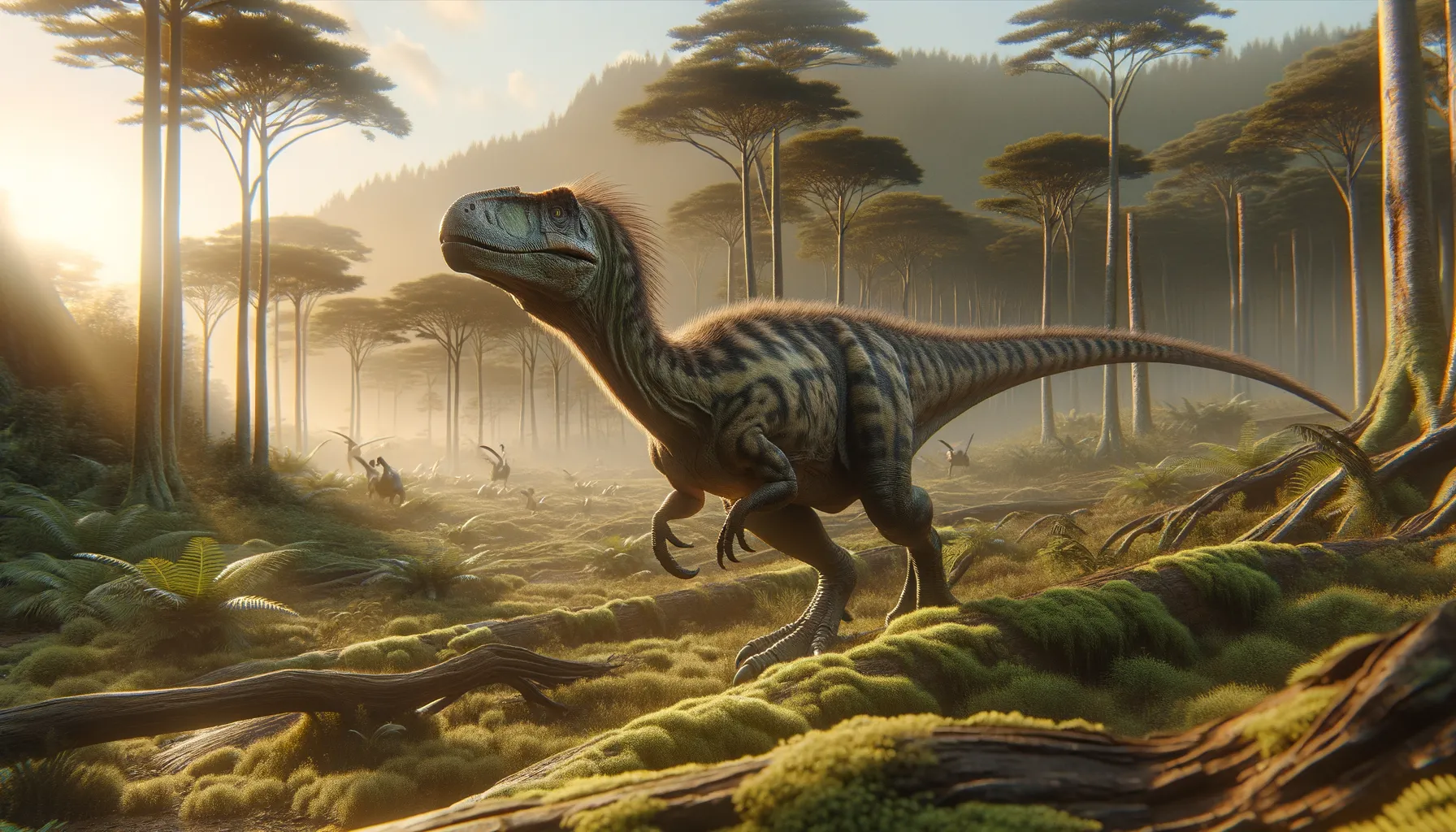
Siluosaurus
Swift predator of the ancient world!
Period
Cretaceous
Length
About 2 meters long from head to tail.
Height
Roughly 1 meter tall.
Weight
Approximately 15 kilograms.
Siluosaurus was a small, agile theropod dinosaur known for its bird-like features. Living during the Early Cretaceous period, it roamed the region that is now China. Its relatively light build and keen senses suggest it was a fast and adept predator. Despite its size, Siluosaurus was a proficient hunter, likely preying on small animals and insects. Its discovery has provided significant insights into the evolutionary link between theropods and birds.
Diet
Siluosaurus primarily fed on smaller animals, which could include lizards and insects. Its sharp teeth and claws were well-suited for grasping and consuming such prey.
Hunting
As an adept hunter, Siluosaurus used its speed and agility to catch its prey. It likely relied on surprise and quick attacks to capture smaller animals in its environment.
Environmental challenges
Siluosaurus faced challenges such as finding food and avoiding larger predators. Climate fluctuations could have also affected its habitat and food supply. Its adaptability would have been crucial in navigating the changing landscapes of the Cretaceous period.
Speed
Moderate, able to move swiftly when necessary.
Lifespan
Estimated at around 10 to 15 years.
First discovery
Discovered in the Shandong Province of China in the early 1990s.
Fun Facts
- Siluosaurus is a relatively unknown dinosaur species discovered in China.
- The name Siluosaurus means 'Silk Road lizard,' reflecting the area where its remains were found.
- It belonged to the ornithopod group, which were generally small, bipedal herbivores.
- Siluosaurus lived during the Early Cretaceous period, over 100 million years ago.
- Unlike some of its larger relatives, Siluosaurus was quite small, likely reaching only a few meters in length.
- Siluosaurus could have been agile, using its speed to evade predators.
- Even though Siluosaurus is not as famous as T. rex or Triceratops, its existence adds valuable information to the picture of dinosaur biodiversity.
Growth and Development
Siluosaurus likely grew rapidly during its early years to reach maturity, which is typical for smaller theropods. This rapid growth would have helped it avoid predation long enough to reach reproductive age. Its development involved the strengthening of its limb muscles for improved hunting abilities. Juveniles might have stayed in sheltered areas to avoid predators.
Habitat
Siluosaurus inhabited forested regions and open landscapes that provided ample cover and hunting opportunities. Its environment would have included dense vegetation along with open spaces for hunting. Seasonal changes might have influenced its movement patterns as it migrated in search of resources. Water sources like rivers or lakes would have been essential for its survival.
Interaction with other species
Siluosaurus interacted with both prey and potential predators within its ecosystem. Relationships with other small theropods could have been competitive, as they vied for similar food sources. It may have coexisted with larger herbivores, living alongside without direct competition. Saving energy by avoiding confrontations with larger carnivorous dinosaurs would have been crucial for survival.
Natural lifespan
In the wild, it could live up to 15 years if not predated upon.
Reproduction
Siluosaurus likely laid eggs in nests, possibly covered or hidden in dense vegetation. Parental care might have been present to some degree, at least initially after hatching, to protect its vulnerable offspring. Mating calls or displays could have played a role in attracting potential mates. Its reproductive strategy would have focused on producing multiple offspring to ensure survival despite high predation risks.
Social behaviour
Siluosaurus might have lived in small social groups or been mostly solitary, depending on the availability of food resources. These groups could have shared territories to increase their chances of finding food. Communication through calls or visual signals might have been used to warn others of danger. Such behavior would have helped in maintaining social bonds while avoiding larger predatory threats.
Fossil locations
Fossils of Siluosaurus have been predominantly found in eastern Asia, particularly in Shandong Province, China. These discoveries have provided valuable information about its structure and adaptions. The location suggests that this area was once a lush and diverse ecosystem. Continued excavation could yield more insights into its life and interactions with other species.
